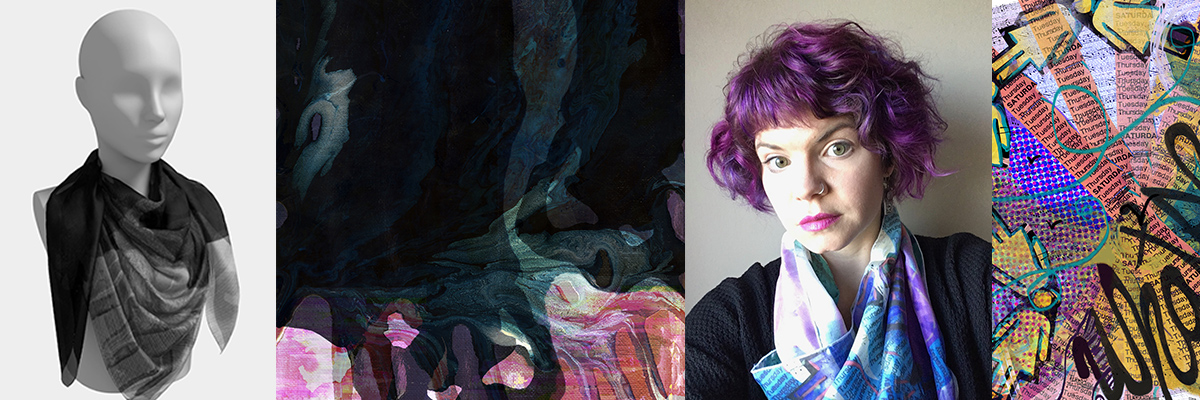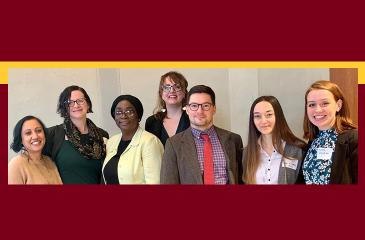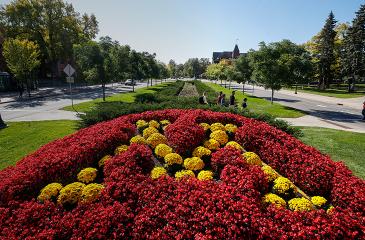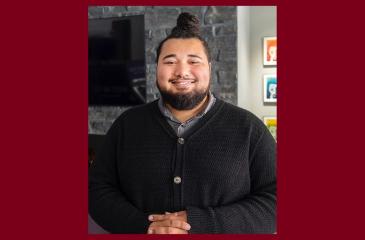In December 2019, Abimbola Asojo, PhD, associate dean for research, creative scholarship, and engagement in the College of Design, presented at the Brainstormers meeting on several projects supported with seed funding through the BOLD Ideas grant program. The goal of the projects were to facilitate programs and meetings to connect the College of Design with health researchers and other interdisciplinary groups centered around the BOLD Ideas initiatives.
A brief description of the projects are listed below:
Sparking Crucial Conversations about Mental Health through Wearable Items

Tasoulla Hadjiyanni, PhD, professor of interior design, and Calee Cecconi, MFA, design director for advancement and artist, created interpretative artwork to relate mental health conditions most reported (anxiety and depression) among college students on a series of scarves. They are collaborating with the UMN Disability resource center to exhibit these scarves with Braille descriptions for visually impaired viewers. They are also working to secure an off-campus exhibition space for these peices. The team hopes to broaden the study to include more focused groups, diverse populations, and the LGBTQ+ student population.
Next Steps
- Explore collaborations with on-campus mental health services and the communities outside the University
- Produce an array of wearables appropriate to a wider audience
Addressing Health Disparities and Quality Health Care Access through Advanced Technology Integration into an Innovative Diagnostic Mobile Application
Integrating technology and innovative diagnostic tools into modern medicine can have a profound impact in addressing health disparities and can improve access to quality health care for millions in need. Linsey Griffin, PhD, assistant professor of apparel design; Kevin Peterson, MD, director of the Center for Excellence in Primary Care; and Bethany Juhnke, PhD candidate at the Earl E. Bakken Medical Device Center, collaborated to develop a proof-of-concept prototype 3D avatar that can be used as a diagnostic tool for a mobile medical application. The team met regularly to refine research scope and need and brought together a wide array of expertise.
Next Steps
- Continue to refine the 3D avatar and user-experience
- Develop 5 user-scenarios to help refine the functionality of the avatar with the AI system
- Develop anatomically correct models presented to the patient and interface with the Flutter application running the AI
Design & Health Brainstorming luncheon on November 11, 2019 at the Weisman Art Museum
Participants from the Weisman Art Museum, College of Design, the Medical School, the BioTech Institute, and Mayo Clinic brainstormed ideas for youth-participatory sessions at the Weisman Art Museum to inform the design of the Institute for Child and Adolescent Brain Health and improve the built environment for youth with mental health and behavioral issues. Participants at the session included Boris Oicherman, WAM; Abimbola Asojo, CDES; Calee Cecconi, CDES; Malini Srivastava, CDES; Kathryn Cullen, MD, Medical School; Michael Winikoff, BioTech Institute; Maiyia Kasouaher, Program in Health Disparities Research (PHDR), Medical School; Yuko Taniguchi, UMR.
Next Steps
- Youth-participatory sessions at the Weisman Art Museum grant proposal in Spring and Summer 2020
- Design strategies that bring together health, sustainability, and biophilic design for the landscape and strategic building interventions for ICABH
CDes Advisory board & Dr Reiko Yajima, PhD, from Stanford University talk collaborations between design and health initiatives, and the pursuit of funding to support research on October 28, 2019.
Participants - Boris Oicherman, WAM; Abimbola Asojo, CDES; Malini , Srivastava, Architecture, CDES; Mary Guzowski, Architecture, CDES; Lucy Dunne, Apparel Design and Wearable Technology Lab; Hoa Vo, Graduate Student, CDES and Bonnie Jean McKay, CDES
Service Design: Designing complex systems to improve service delivery
The College of Design and School of Nursing have recognized an opportunity to shift the content of HUMF 5874, a graduate student course on real world service delivery problems, towards interrogating larger-scale issues and proposing design interventions that are holistic, yet focused on specific community needs as part of system change initiatives. This curriculum revision will also incorporate an expanded view of healing environments, healthy communities, and future collaborative research partnerships. The team included Emily Stover, CDES; Debra Lawton, CDES; Albert Linderman, School of Nursing; Ryan Armbruster, School of Public Health
Next Steps
- Preparing students to address health disparities and lack of access.
- Focus on healthy people 2030 and expand the notion of what public health means
Community-University Health Care Center (CUHCC) Design Charette

CUHCC receives 400 patients a day and 63,000 visits a year. Forty-two percent of patients speak a language other than English. There is high traffic within the clinic and limited space to manage daily operations. A round table discussion/design ideation session for CUHCC's waiting room was held with CDES students and faculty and CUHCC clinic students and staff. The group discussed and developed design proposal to address overcrowding in the waiting room, traffic flow issues, and how to make the space more accessible and universally welcoming.



